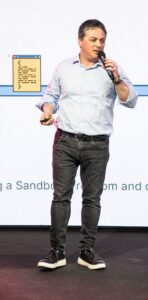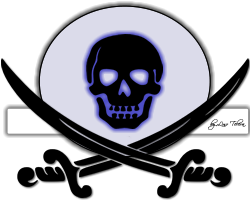The last couple of months (from May 20th to June 3rd) have been intense. After an inspiring trip to Silicon Valley (blog posts coming soon!), I barely had a moment to rest before diving into preparations for two major speaking engagements (all while juggling my regular job responsibilities and university commitments).
As mentioned in my previous posts, I was selected to speak at both Platmosphere 2025 and HashiDays London 2025. Here’s a recap of my experience at Platmosphere, where I shared key lessons from my journey as a Platform Engineer.
My Platform Engineer Experience at Platmosphere 2025
 One of my favorite stories to tell, especially to those new to today’s tech landscape, is how I became a Platform Engineer. My path has taken me through various paradigms, best practices, compliance frameworks, and architectural patterns. It wasn’t a straight line, but each step added depth to my perspective.
One of my favorite stories to tell, especially to those new to today’s tech landscape, is how I became a Platform Engineer. My path has taken me through various paradigms, best practices, compliance frameworks, and architectural patterns. It wasn’t a straight line, but each step added depth to my perspective.
Years ago, we used to joke about developers’ “creative freedom”. They were expected to master any tech stack on the fly, often with no constraints, and apologies were offered only after production issues hit. But as anyone paying the bills knows, such freedom without control can lead to spiraling costs and disappointing ROI.
This led to a key realization: freedom and control must coexist. Developers need the freedom to innovate, while Site Reliability Engineers (SREs) and operators must ensure availability, governance, and cost efficiency. At my current job, I embrace this balance (what I like to call the “Freedom and Control” paradigm) and explore technologies that can help make life better for both devs and ops.
Thanks to Mia-Platform and their incredible event on the 20th of May 2025, I had the chance to share my four-year journey in Platform Engineering: from failures to breakthroughs, from theory to practice, and even hands-on collaboration with teams to implement real solutions.
Is there a definitive Automation Platform?
Let’s be honest: there’s no such thing as a “definitive platform”. But within the vast CNCF ecosystem, it is possible to build a platform that fits your organization’s needs exceptionally well.
A mature automation platform typically includes:
-
A version-controlled repository storing app code, infrastructure definitions, and configuration, enabling full traceability and rollback
-
A modular workflow engine that triggers actions dynamically based on source changes
-
An infrastructure abstraction layer that supports smooth and repeatable application deployments
-
A set of APIs to expose the platform’s capabilities to a UI or other integrations
Mia-Platform checks all these boxes. With a powerful templating system and robust ecosystem integrations, it’s a strong choice for enterprises and software factories looking to scale efficiently.
Implementing automation isn’t just a technical task—it’s an organizational one.
In many companies, decisions are heavily influenced by business priorities and cultural inertia, which can create significant gaps between leadership and technical teams. These gaps often slow down or derail even the most promising automation initiatives.
There’s no universal blueprint to solve this, but two things consistently help: open communication and genuine engagement. By involving developers and operators early and often, you can build workflows that are not only efficient but also embraced by the people who use them.
AI for Platform or Platform for AI
I wrapped up my talk with a forward-looking discussion about AI.
Mia-Platform has recently gained attention for integrating AI agents that assist developers and operators during the application development lifecycle, accelerating time-to-value in exciting ways.
But we’re just getting started. As a Platform Engineer, I see AI through two complementary lenses:
-
AI for Platform – where AI enhances platform capabilities. Think AI-powered monitoring, telemetry analysis, and even test generation. Mia-Platform is starting down this road, and I’m excited to see what’s next.
-
Platform for AI – where platforms support the deployment and evolution of AI workloads. This is where things get more complex. Continuous learning, scalable infrastructure, and evolving components are the next challenges we need to tackle—and the landscape is still maturing rapidly.
It was a pleasure and an honor to participate in Platmosphere 2025. Sharing my experience, learning from others, and discussing the future of platforms and AI was deeply rewarding.
A huge thank you to Mia-Platform for the opportunity—I hope to continue the conversation soon! Stay tuned for part 2 of this post talking about HashiDays in London 2025.
